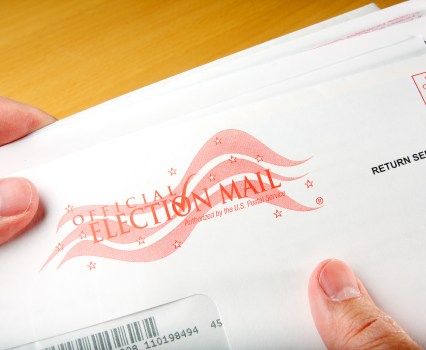This year, an independent expert panel was appointed to conduct
a legislative review of the Cannabis Act. The panel heard
from a wide range of different stakeholders and experts, including
industry groups, consumers, public health officials, researchers
and academics, youth groups, law enforcement, and First Nations
communities, among others. In culmination of the expert panel’s
first phase of work, it published the “What We Heard
Report” this month. The report comes five years after the
Cannabis Act initially came into force in October
2018.
The report contains a summary of the cannabis regulatory
framework, key data brought to the panel’s attention, and the
perspectives shared with the panel by stakeholders and experts. The
report focuses on eight key areas: public health; youth; First
Nations, Inuit and Metis; home cultivation; economic, social, and
environmental impacts; adult access; deterring criminal activity
and displacing the illicit cannabis market; and access to cannabis
for medical purposes. It also contains detailed and helpful
cannabis use statistics, products used and methods of consumption,
use data by province and retail store distribution per capita.
As the report is lengthy, this article focuses only on areas
that industry players have been keen to see amended, and the
panel’s observations on differing stakeholder viewpoints on
these issues. The overarching message of the report is that the
policy objectives of public health and the protection of young
persons will continue to be the guiding light as the cannabis
regulatory framework evolves over time. These policy objectives are
likely to inform the panel’s ultimate recommendations for the
key pain points felt by industry players.
10 mg Edible Limit
The report noted contrasting observations from different
stakeholders on the limit of 10 mg of THC per package of edibles.
Industry stakeholders have long complained this limit is too low,
especially compared to the relatively high concentration limits for
concentrate products. Excess packaging waste was also cited as an
environmental concern with this limit.
Public health stakeholders firmly held that there was no need to
increase the 10 mg of THC limit for edibles because frequent
cannabis users typically smoke or vape instead of using edibles,
and novice cannabis users are more likely to choose edibles.
Therefore, 10 mg THC limit was positioned as a reasonable upper
limit for a single package to limit the risk of overconsumption by
novice users.
Some public health participants went even further and suggested
that the maximum THC concentration should be limited in all product
forms, citing incidents of accidental consumption by children in
support of this measure. However, others suggested that these
incidents were largely attributable to illicit products, which are
often packaged to look like candy and other conventional food
products.
Packaging and Advertising
There appeared to be more alignment between industry
stakeholders and public health representatives on other aspects of
packaging and advertising.
Public health stakeholders took the view that most promotion
activities undertaking by licensed producers and retailers have
been in compliance with the Act’s restrictions. However, some
noted that youth exposure to non-compliant promotion continues to
occur, for example from advertisements on social media and other
apps commonly used by youth (e.g. Instagram and SnapChat).
Public health stakeholders and industry stakeholders tended to
agree on the suggestion to simplify and streamline packaging and
the information on product labels (for example, removing the
requirement to label the quantity of both THC and total THC, and
allowing the use of QR codes to convey more detailed product
information to interested consumers).
Similarly, industry stakeholders noted that consumers having
more information about products and their effects would help
consumers make more informed choices. Industry stakeholders
recommended that producers and retailers be permitted to
communicate more information to consumers on product packages,
labels, and the in-store environment. Examples of information
included cannabis testing results, information on terpenes, brand
narratives, the ability to highlight product attributes, or the
agricultural practices used in the production of the cannabis.
Health Canada officials took the view that these examples could all
be permissible, provided they do not contravene federal
requirements (like false and misleading advertising, appealing to
young persons, and lifestyle promotion).
These measures would also help industry players differentiate
themselves from other companies. They noted this is currently
difficult to do because of stringent promotion, packaging, and
labelling restrictions. There was also some concern that Health
Canada’s guidance is not always clear as it relates to
promotion and advertising activities, and it does not always have
consistent applications of the regulations.
Public Education
The panel found there appeared to be considerable ambiguity
amongst key players as to who should be responsible for educating
the public on specific characteristics of cannabis.
The report acknowledged that currently a “grey market”
exists where people are most likely to gather information from
informal channels, such as family members, friends, people with
experience using cannabis, and online forums. This is partially due
to the fact that there are knowledge gaps and general discomfort
with the subject matter that exists within the health care
community. People then turn to budtenders at retail stores for
answers to questions about the uses and health effects of cannabis,
notwithstanding that it is prohibited for budtenders to supply that
information. Federal licence holders and retailers also expressed
uncertainty as to whether they are permitted to provide education
on characteristics of cannabis, or whether this would be in
contravention of promotion rules.
Participants spoke about the need for education of health care
professionals to close this knowledge gap. Some provincial
governments also suggested the framework be amended to allow
retailers and labels to provide information on responsible use,
dosing, and expected effects of given products.
Similarly, there appeared to be general agreement among
stakeholders for the need for more informative health warning
messages and product-specific labelling that are tailored to the
product format (for example, putting a smoking warning on a topical
product is not helpful). Additionally, they raised the need for
public education efforts to, for example, show how to interpret the
cannabinoid content on the label, and how to distinguish legal from
illicit products especially when buying online.
Excise Tax
Industry stakeholders have loudly called for excise tax relief,
as they assert the tax level impacts their viability. However,
public health stakeholders and other policy professionals argued
against any change to cannabis taxation, given the role that
pricing can play in protecting public health by reducing demand.
There were also suggestions that tax revenue could be a source of
funding for public education activities.
Other Harm Minimization Efforts
The report discussed a variety of other harm minimization
efforts put forward by diverse stakeholders.
In general, public health stakeholders wanted to see more
regulation addressing harm minimization. For example, they
recommended implementing more rigorous quality assurance standards
around vaping products and restricting the sale of flavoured vaping
products. Public health stakeholders also proposed the
implementation of controls on retail density to reduce public
exposure to cannabis products, as well as prohibiting the
co-located sale of alcohol and cannabis. They also suggested
measures like requiring lockboxes for cannabis storage in the home,
and THC labelling directly on products, to further reduce
accidental consumption by youth.
Industry representatives pointed to different reasons for
ongoing harm, mainly stemming from the persistence of the illicit
market. Industry players explained how illicit products remained
widely available due to inconsistent enforcement against the
illicit market, the pricing of legal cannabis products compared to
those in the illicit market, the ready availability of illicit
edibles in a higher than 10mg THC per package format, and unwieldly
restrictions on promotion, packaging and labelling which impeded
public education about products. These factors have forced legal
players to compete directly with the illicit market.
Moreover, industry representatives cautioned governments not to
assume the growth of the legal cannabis market has a negative
impact on public health. For example, in some situations, consumers
use cannabis as an alternative to other harmful substances,
including, alcohol, tobacco, opioids, and illicit cannabis
products, and can even help harm reduction efforts to transition
away from those kind of products.
The panel noted there is still a lack of progress on research on
cannabis and its effects to be able to draw a firm conclusion on
the overall impact of legalization on public health. Some hurdles
that have made research efforts difficult are the impact of the
COVID-19 pandemic and researchers’ observations that the
clinical trial framework under the Food and Drug Regulations
precludes using cannabis products to the standards under the
Cannabis Act.
Home Cultivation
The panel did not hear many comments about home cultivation of
cannabis. This was in contrast to the run up to legalization, where
there was significant Parliamentary debate about home cultivation.
Law enforcement and public safety stakeholders acknowledged that
the four-plant allowance has not been problematic from a law
enforcement perspective.
Next Steps
The next phase of the panel’s work will focus on providing
advice and recommendations to the Minister of Health and the
Minister of Mental Health and Additions on areas of the legislative
framework and its implementation that may benefit from improvement
or reform. They will conduct additional engagements in fall 2023.
They will also prepare a final report for the Ministers with the
panel’s assessment of the framework, and their advice and
recommendations by approximately March 2024. The panel welcomes
further feedback during this process.
Perhaps tentatively, we can expect recommendations to allow more
product information and public education for cannabis products,
given that most stakeholders seemed to agree at least to some
extent on these issues. However, given stakeholders’
contrasting views on 10 mg edibles limits, excise taxes, increased
access to promotion, and other harm minimization measures, it seems
likely the policy goals of public health and protection of young
persons may prevail in the panel’s forthcoming recommendations
for legislative amendments.
Originally published November 2nd, 2023.
The content of this article is intended to provide a general
guide to the subject matter. Specialist advice should be sought
about your specific circumstances.
#Views #October #Legislative #Review #Cannabis #Act #Report










